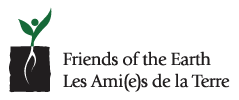#MakeDentalAmalgamHistory
The Minamata Convention
The Minamata Convention is a global treaty to protect human health and the environment from the adverse effects of mercury. The Convention was agreed in 2013 and entered into force in 2017.
Canada ratified the Convention in 2017 saying that:
“Exposure to mercury is known to cause negative health effects to those who are most vulnerable, particularly fetuses, infants, and young children. In addition, northern peoples are especially vulnerable to mercury as it tends to accumulate naturally in the Arctic, and it affects local food sources like fish and marine mammals.
As an Arctic country, Canada will be one of the main beneficiaries of this agreement. While we have reduced our own mercury emissions by over 90 percent in the last 40 years, more must be done to reduce global emissions that have had an impact on Canada and its Arctic ecosystems. Over 95 percent of the mercury deposited in Canada from human activity comes from foreign sources.”
Why is mercury in dental amalgam still an issue in Canada?
For the Fourth Conference of the Parties in 2021, Canada reported “various dental health measures that the Canadian Ministry of Health (Health Canada) implemented including the community-based Children’s Oral Health Initiative for First Nations and Inuit, which focused on the prevention of dental disease and the promotion of good oral health practices among children, their parents/caregivers, and pregnant women. Together, the strategy, framework and initiative work to minimize the need for dental restorations by setting out our national objectives”.
In its National Report to the Minamata Convention, Canada reported that “90% of sales of filling material in Canada are composite resin and less than 10% are dental amalgam,” with users, in the main, “Remote communities, Indigenous peoples, refugees and immigrants, people with disabilities, elderly people, and low-income Canadians.”
In explanation, Canada says “[M]any Inuit and remote communities do not have a resident dentist and rely on irregular visits from fly-in dentists who reside in southern Canada. The issues of access to care shown in this example applies to other remote and Indigenous communities in Canada who do not have resident dentists.”
Meanwhile in its 2021 note on non-mercury alternatives, Canada explains why dental amalgam will remain the choice for Inuit and First Nation Groups.
“For Inuit and other First Nations groups, the federal government provides some health and dental insurance. However, many Inuit and remote communities do not have a resident dentist and rely on irregular visits from fly-in dentists who reside in southern Canada. Often only the most serious cases can be seen due to time limitations, otherwise people must be flown in and out of the community for treatment and dental emergencies.15 The issues of access to care shown in this example applies to other remote and Indigenous communities in Canada who do not have resident dentists. Non-mercury alternatives to dental amalgam are not always the best choice for restorations in these situations because they do not have the same strength and longevity of dental amalgam, resulting in more frequent replacements.”
Global Dental Amalgam Tracker show status of phase out as of January 2023

No Progress
At the Fifth Conference of the Parties in 2023, “…efforts by the African Group and other parties to agree on a phaseout of dental amalgam, which is still widely used for dental fillings, did not achieve consensus. The final decision only requires parties that have not yet phased out dental amalgam to report on how they plan to do so.”
Canada’s position as of February 4, 2023 shows stalling on action to halt use of dental amalgam.
The Government of Canada supports the Convention’s phase-down approach to dental amalgam use and has met its obligations under the Convention through the implementation of various actions to minimize the need for dental restoration, reduce mercury releases to the environment from dental facilities, and restrict the use of dental amalgam to its encapsulated form…Based on scientific evidence, including recent Canadian studies, the mercury that is absorbed from amalgams is not at a level of concern for most Canadians, regardless of the number of amalgam surfaces. The Government’s position is that the use of dental amalgams is safe and that mercury exposure from dental amalgams does not pose a health risk for the general population.
Friends of the Earth says Canada must follow the EU decision
“We welcome the amalgam ban in the EU,” says Beatrice Olivastri, CEO, Friends of the Earth Canada. “We are concerned, however, that Canada’s position is outdated. It still maintains that “the use of dental amalgams is safe and that mercury exposure from dental amalgams does not pose a health risk for the general population.”
The agreed EU regulatory proposal states, “Mercury is a highly toxic element and a major risk to the environment and human health. It is a potent neurotoxin inducing permanent brain and kidney damage in adults and affecting foetal and early childhood development. Hence, mercury has been classified under Union law as being toxic for reproduction, fatal if inhaled, causing damage to all organs through prolonged or repeated exposure and very toxic for aquatic life with long lasting adverse effects. 1
In Canada, amalgam use is still supported under government programs such as the Dental Benefits Guide for First Nations and Inuit: Non-Insured Health Benefits program.
“It’s time that Canada joins the European Union and other progressive countries to ban all uses of mercury in dentistry,” says Olivastri.

